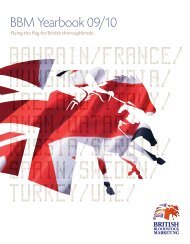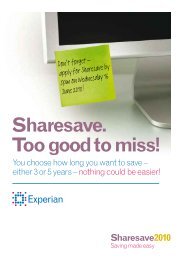V ALIANT PETROLEUM PLC Annu A l Repo R t & Accounts 2009 ...
V ALIANT PETROLEUM PLC Annu A l Repo R t & Accounts 2009 ...
V ALIANT PETROLEUM PLC Annu A l Repo R t & Accounts 2009 ...
Create successful ePaper yourself
Turn your PDF publications into a flip-book with our unique Google optimized e-Paper software.
<strong>Annu</strong>al <strong>Repo</strong>rt & <strong>Accounts</strong> <strong>2009</strong><br />
2. Significant accounting policies continued<br />
(c) Revenue recognition<br />
Revenue is recognised when it is probable that the economic benefits associated with a transaction will flow to the enterprise and<br />
the amount of the revenue can be measured reliably. In particular, revenue from the production and sale of crude oil is recognised<br />
when the title has been transferred to customers, which is when risk and rewards pass to the customer.<br />
Interest income is accrued on a time basis, by reference to the principal outstanding and the effective interest rate applicable.<br />
Other income is measured at the fair value of the consideration received or receivable and represents amounts receivable for<br />
goods and services provided in the normal course of business, net of discounts, VAT and other sales-related taxes.<br />
(d) Foreign currencies<br />
Following the commencement of oil production from the Don Fields, the Group has switched its functional and presentation<br />
currency from Sterling to US dollars with effect from 1st January <strong>2009</strong>. The balance sheet at 31st December 2008 was converted<br />
at the exchange rate on that date of GB£1: US$1.4378. Prior periods’ results and cash flows have been generally translated using<br />
an average exchange rate for the year and prior period balance sheets at period end rates.<br />
Transactions in foreign currencies are recorded at the rates of exchange ruling at the transaction dates. Monetary assets and<br />
liabilities are translated into US dollars at the exchange rate ruling at the balance sheet date, with a corresponding charge or credit<br />
to the income statement.<br />
(e) Financial instruments<br />
Financial assets and financial liabilities are recognised on the Group’s balance sheet when the Group becomes party to the<br />
contractual provisions of the instrument. The Group has not entered into any derivative financial instruments during the year.<br />
Cash and cash equivalents<br />
Cash includes cash on hand and cash with banks. Cash equivalents are short-term, highly-liquid investments that are readily<br />
convertible to known amounts of cash with three months or less remaining to maturity from the date of acquisition and that are<br />
subject to an insignificant risk of change in value.<br />
Investments<br />
Fixed asset investments in subsidiaries are stated at cost in the Company only balance sheet and reviewed for impairment if there<br />
are any indications that the carrying value may not be recoverable.<br />
Trade receivables<br />
Trade receivables are generally carried at original invoice amount less a provision for bad and doubtful debts. A provision for bad<br />
and doubtful debts is established when there is objective evidence that the Group will not be able to collect all amounts due<br />
according to the original terms of the receivable. The amount of the provision is the difference between the carrying amount and<br />
the recoverable amount, being the present value of expected cash flows, discounted at the market rate of interest for similar<br />
borrowers.<br />
Borrowings<br />
Borrowings are recognised initially at the fair value of the proceeds received which is determined using the prevailing market rate of<br />
interest for a similar instrument, if significantly different from the transaction price, net of transaction costs incurred. In subsequent<br />
periods, borrowings are recognised at amortised cost, using the effective interest method; any difference between fair value of the<br />
proceeds (net of transaction costs) and the redemption amount is recognised as a finance cost over the period of the borrowings.<br />
Borrowing costs directly attributable to acquisition of qualifying assets, which are assets that necessarily take a substantial period<br />
of time to get ready for their intended use, are added to the cost of those assets, until such time the assets are substantially ready<br />
for their intended use. All other borrowing costs are recognised in profit or loss in the period in which they are incurred.<br />
49
















